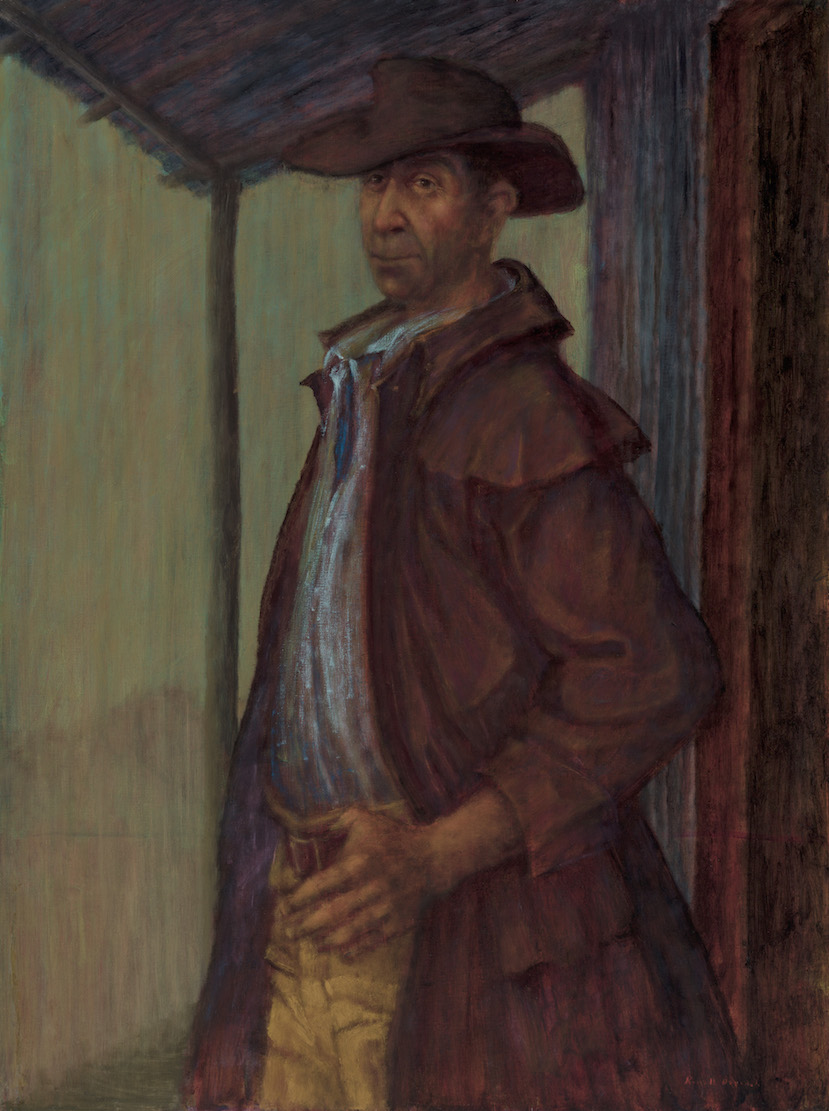Rain at Cattle Creek
Russell Drysdale

Details
- Artist
- Russell Drysdale
- Title
- Rain at Cattle Creek
- Year
- 1967
- Medium
- oil on canvas
- Size
- 100 x 75 cm
- Details
signed lower right: Russell Drysdale
Sold This artwork has been sold. Please contact us for similar artworks.
Provenance
Mr & Mrs R.C. Crebbin, Sydney
Lauraine Diggins Fine Art, Melbourne
private collection, USA
Exhibited
Johnstone Gallery, Brisbane, 15 – 30 August 1967 (see Klepac, 1983, p.178)
Russell Drysdale Paintings 1940 -1972, S.H. Ervin Gallery, National Trust Centre, Sydney, 14 – 21 July 1985, cat. no. 48
Literature
Lou Klepac, Russell Drysdale, Bay Books, Sydney, 1983, plate 173, p.354
Art and Australia, Sydney, Ure Smith, 1967, 5/2, p.428
Further Information
One of Australia’s most important artists, Russell Drysdale exhibited widely both in Australia and overseas, including the Venice Biennale in 1954. He was knighted for his services to Australian art in 1969. His art was shaped by his experience of the Australian landscape and its people and he gained critical acclaim for his depictions of the ‘outback’, especially images of the tragic consequences of drought-stricken land. In the 1950s and 60s Drysdale often went on driving and camping expeditions across Northern and Western Australia.
Rain at Cattle Creek highlights Drysdale’s skill as both a draughtsman and a colourist and his ability to evoke an iconic sense of place – the Australian outback. His portraits often focus on an individual, sometimes characterised by a quiet strength and determination.
“People wonder about the people that I’ve painted – individuals, so-called characters… why I paint them and why I like painting them. This of course is part of one’s own life and one’s own early experiences. These were the people virtually that one grew up with. You can take your society people, beautiful they might be, to be they’re ephemeral people. These others aren’t. They just go on. They’re the kind of towers that reach out, the survival thing means something.”
(Russell Drysdale’s Australia, Ure Smith, 1974, p. 4)
“The point that people bring up about my paintings is that they depict a lone man in a landscape and therefore its lonely. Quite frankly, I don’t really mean to emphasize that there is a loneliness. You can delineate landscape, the bones of a landscape, and in this country this age-old thing is tremendously gripping, but if you really want to paint up a landscape that is deserted, then if you put somebody within it, you do two things. You point up the loneliness, not because it’s the man that is in the landscape but it’s because one man is there that the landscape is lonely, unpeopled. At the same time, secondly, you can try and point out that this is a man, just a man, unconquered by landscape, because man is a species like every other species on this earth and he is not alien to a landscape, otherwise he would have to live somewhere in outer space.”
(Russell Drysdale’s Australia, Ure Smith, 1974, p. 28)
Drysdale’s treatment of this subject reveal the poetic and spiritual qualities which still strongly influence the vision of outback Australia today.
© Lyn Clark
